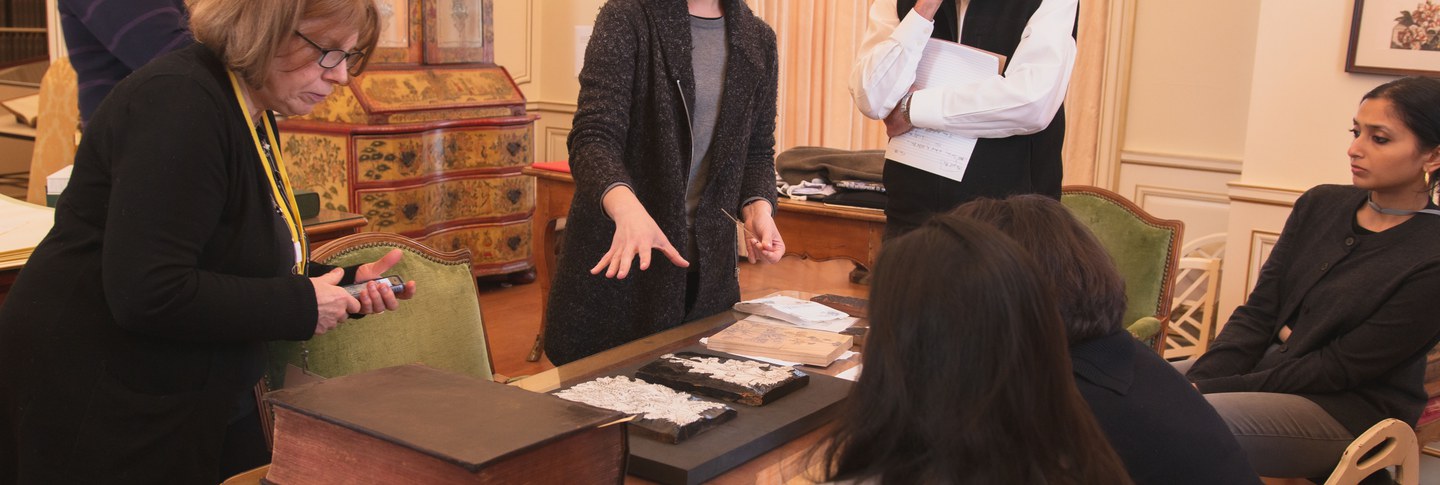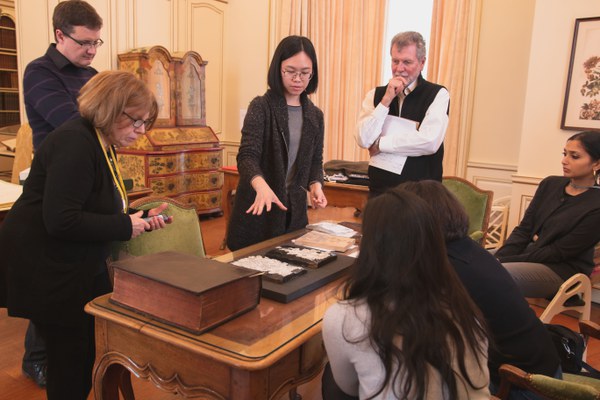
On January 10, Yota Batsaki and Anatole Tchikine organized a study day on the botanical art of Margaret Mee in the context of the Plant Humanities Initiative funded by The Andrew W. Mellon Foundation. Mee (1909–1988) was an artist, explorer and early advocate for the preservation of the Amazon’s ecosystems. Held in the Rare Book Library, the study day was designed to inform the upcoming exhibition Margaret Mee: Portraits of Plants (March 23–August 24, 2020) that will present 20 stunning paintings of Amazonian flora acquired by Dumbarton Oaks founder Mildred Bliss in 1966 and 1967, and dating to Mee’s first three expeditions in the Amazon.
The study brought together experts and practitioners of botany, botanical art and illustration, early modern print culture, and conservation. The first session on “The Art and Science of Botanical Painting” focused on Mee’s technique and development as an artist, situating her within a tradition of women botanical artists in the rare book collection dating back to the seventeenth century. The group also had an opportunity to study recent acquisitions, such as the nineteenth-century watercolors of Caroline Maschek (1857–1938), that expand the canon of women botanical artists.
The next session on “The Reproduction and Dissemination of Botanical Knowledge” revolved around discussion of the three Mattioli woodblocks in the Dumbarton Oaks collection and was led by Jessie Chen, a PhD candidate in the Department of History and Art History at Utrecht University. Chen, whose research engages with historical reworking and remaking as an empirical investigation of early modern visual culture, discussed her process for creating a reproduction of one of the woodblocks to serve as a tactile complement to the exhibition. The group then discussed the broad circulation of the Mattioli images in the early modern period with reference to other works, including the manuscript of Giovanna Garzoni’s Piante Varie (ca. 1631). Discussion then moved to the living tradition of botanical representation, with close viewing of the pen and ink illustrations of Alice Tangerini, staff illustrator at the National Museum of Natural History, Smithsonian Institution, who employs the technique of collage; the color photographs of Amy Lamb, who trained as a biologist and employs scale and calibrated lighting to emphasize the details of plant structure; and the watercolor book illustrations of Nirupa Rao who, like Mee, sketches in the field and works closely with botanists and conservationists in India. The work of all three women is featured in the exhibition.
The afternoon discussion, “Plants in Context: Ecosystems of the Amazon,” led by John Kress, focused on Mee’s inclusion of the forest background in some of her later plant portraits. Botanical art and illustration place a spotlight on a particular plant by removing it from its natural context and depicting it alone, often against a white background. In her later paintings, Mee occasionally showed the plant in its environment to reflect her growing concern about the preservation of the Amazon’s ecosystems. A loan for the exhibition from The Shirley Sherwood Collection, Philodendron Rio Negro Amazonas, exemplifies this approach. The study day ended with a review of the educational programming that will accompany the exhibition and discussion of how best to convey the themes of plant ecology and environmental conservation to a broad audience.

